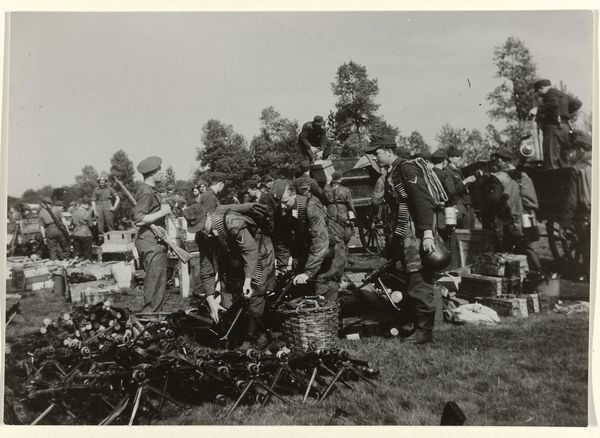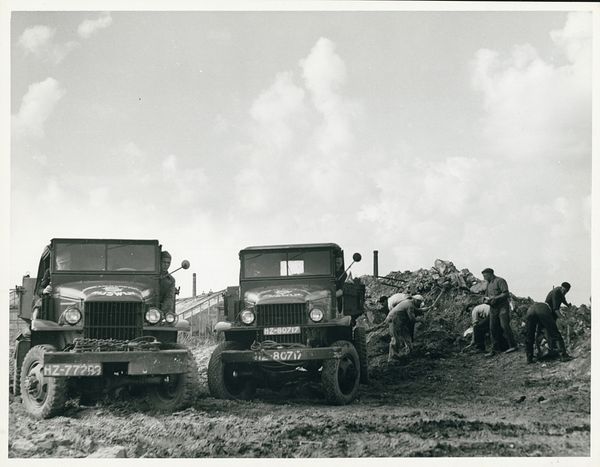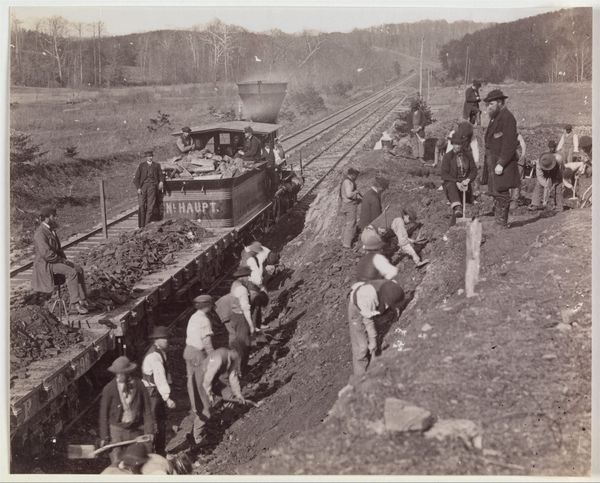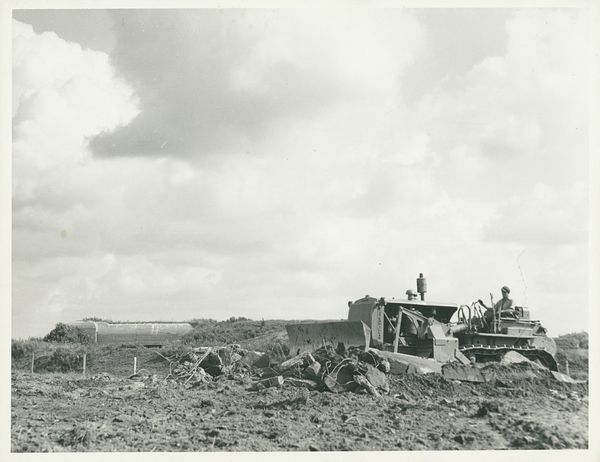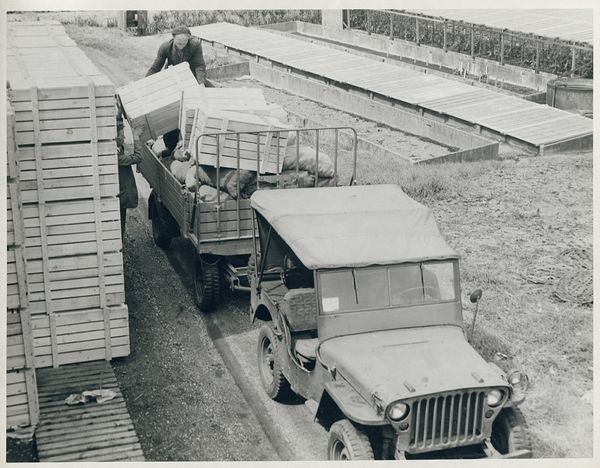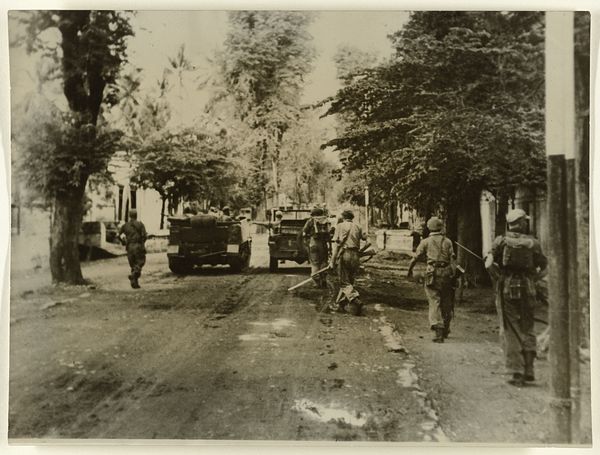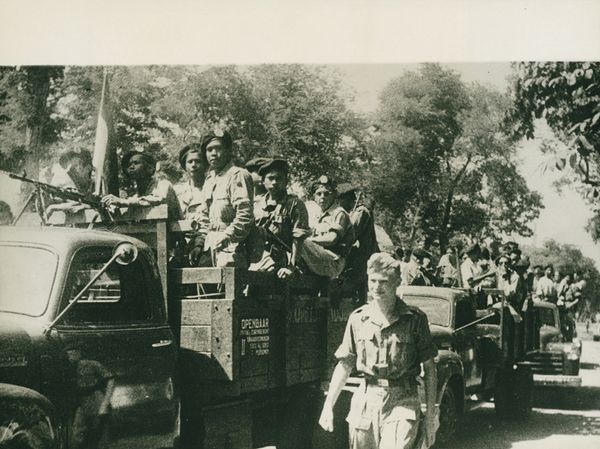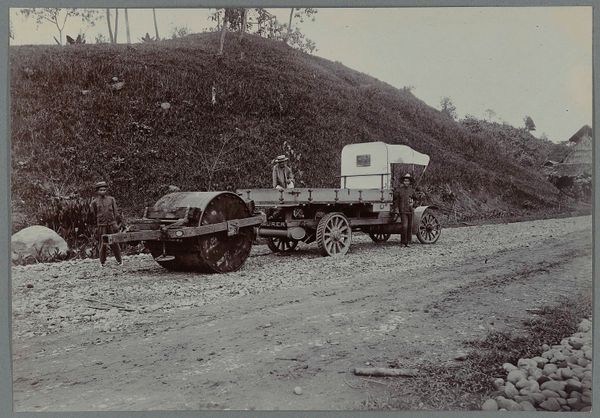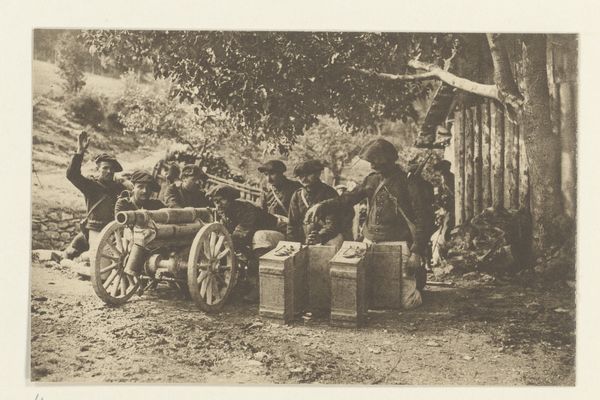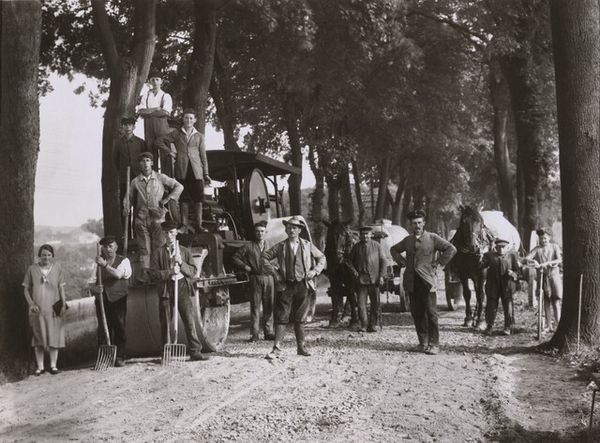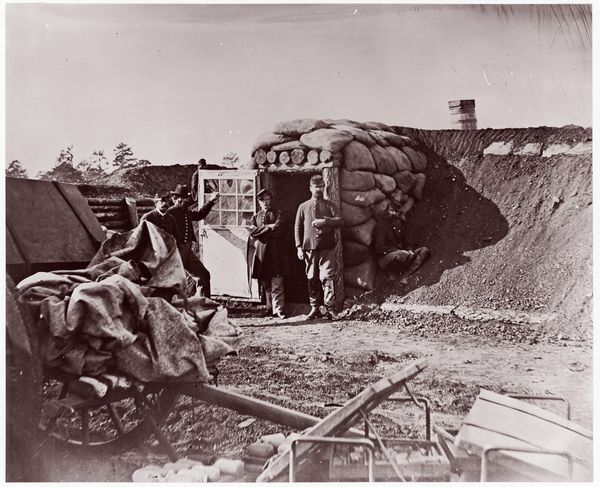
photography, gelatin-silver-print
#
portrait
#
landscape
#
outdoor photograph
#
outdoor photo
#
photography
#
historical photography
#
gelatin-silver-print
#
monochrome photography
#
realism
#
monochrome
Dimensions: height 55 mm, width 70 mm
Copyright: Rijks Museum: Open Domain
Curator: This gelatin-silver print, "Two Soldiers Sitting in the Grass," dates from somewhere between 1940 and 1945. We don't know who made it, only that it resides here at the Rijksmuseum. What's your initial impression? Editor: The sheer ordinariness of it is striking. It feels so…intimate, a slice of everyday life jarringly juxtaposed with the heavy equipment looming behind these lounging soldiers. There’s something melancholic in its quiet simplicity. Curator: Absolutely. Look at how the washing line hangs just behind them. It's a portrait embedded in the reality of wartime. There's this interesting tension between the personal—almost domestic—space, and the public one symbolized by the trucks in the background. Editor: The contrast is beautifully unsettling, like finding a forgotten photograph in an attic. And the soft light really brings out a casual camaraderie, while reminding the viewer that it could be quickly broken up with sudden urgency. Curator: Right, these soldiers are young, but are positioned in a staged, restful repose during wartime which lends a feeling of uncertainty to their situation. The anonymous artist uses such an interesting documentary strategy to give access to this paradoxically familiar yet alien time and experience. Editor: It prompts questions about what the equipment suggests. Are they transporting it, securing it? The landscape remains unchanged, as wars pass. It is an enduring witness of all possible states, contrasting the temporality of war to nature's slow moving permanence. Curator: Precisely. The photograph makes you wonder what were they thinking at that very moment? I suspect about many normal things, such as maybe that day's lunch, or what they did during their downtime from combat the previous night, but this will forever be unknown to those viewing the photograph now. Editor: And in that anonymity, it becomes universal, a poignant reminder of shared humanity in the face of conflict. The mundane elevated, right? Curator: Exactly. It’s a delicate dance between revealing and concealing the nature of these experiences in wartime, leaving us to fill in the narrative with our own empathy. Editor: So, not a depiction of heroism or propaganda. Instead, a gentle nod to humanity which asks its audience to pause in somber observation and think of war's realities on our lives. Curator: A quietly powerful reflection, a reminder that behind the machinery of conflict are people with their own lives, their small and immense worries. Thanks for walking us through that.
Comments
No comments
Be the first to comment and join the conversation on the ultimate creative platform.
